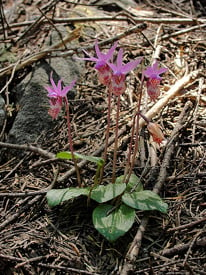
Scientists have known for some time that a critical relationship exists between orchids and fungi but have been stumped about the precise nature of that relationship. In nature, microscopic fungi provide the vital nutrients that young orchids need for healthy growth. In fact, in their native habitats, orchid seedlings feed exclusively on minute fungi found in local soils. When fungi are absent, orchid seeds often fail to germinate and orchid seedlings do not develop into mature orchid plants.
Development and deforestation have led to habitat destruction that has imperiled numerous orchid species. Unfortunately, even when new forests have been planted to replace lost habitat, threatened and endangered orchid species have failed to thrive and repopulate the land. Until recently, scientists could not figure out why reforestation programs to save endangered orchid species were not working. Ecologists at the Smithsonian Environmental Research Center have finally discovered the key to orchid survival that will, hopefully, lead to the successful protection and survival of endangered orchid species.
Smithsonian ecologists discovered that forest age and fungi quantity are the two critical factors that promote healthy orchid germination and growth. The results of the 4-year study were published in the January 25, 2012, edition of the journal Molecular Ecology. The study’s most important discovery is that the quantity of fungi present is the key factor in orchid survival. Fungi presence alone does not promote orchid germination; fungi must be present in significant quantity for orchid development to occur. Scientists also found that fungi prefer old-growth forests to new forests, most likely because of the important role they play in decomposition. Scientists say the next step is to see where new forests can be seeded with enough fungi to promote orchid growth and protect endangered orchid species.
Photo credit: MiguelVieira

Copyright Just Add Ice® Orchids 2023